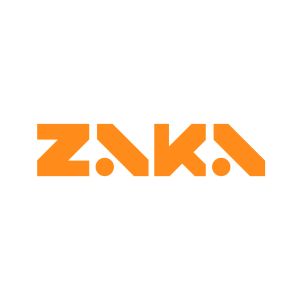Welcome back to our blog series on navigating the world of hiring in AI! I’m جان-بيار فخري, Lead AI Engineer at زكا, and I’m thrilled to continue this journey with you. In our first blog, we explored how to secure internships in fields like Machine Learning (ML), Natural Language Processing (NLP), Computer Vision (CV), Large Language Models (LLMs), and Data Science, offering practical tips and insights to help you get started in your AI career.
Now that we’ve laid the foundation with internships, we’re moving on to the next step in the hiring ladder – finding a job in the specialized fields of NLP and LLM. This blog will focus on helping candidates at different levels, whether you’re just starting out as a junior, progressing to a mid-level role, or aiming for a senior position. We’ll discuss what to expect in interviews, provide common technical questions, and share strategies for tackling use case scenarios so you can confidently navigate the hiring process and secure a position in these dynamic fields.
As part of our series, we’ll continue to post, diving deeper into AI career-building strategies. Let’s keep moving forward on this exciting path toward success in AI!
As the field of Machine Learning (ML), Natural Language Processing (NLP), and Large Language Models (LLMs) continues to evolve, so do the job roles and expectations at various levels – whether you’re just starting as a junior or aiming for a mid or senior-level position. This blog is designed to provide tips for people seeking jobs in ML/NLP and LLM, covering what to expect in interviews, common technical questions, and how to tackle use case scenarios to secure your dream job.
1. Understanding the Differences: Junior vs. Mid vs. Senior Roles
Before diving into interview prep, it’s crucial to understand the differences between junior, mid, and senior roles in NLP and LLM.
- Junior Roles: At this level, companies typically expect foundational knowledge in ML and NLP. Juniors are often expected to assist in tasks like data preparation, model training, and basic code implementations. Your responsibilities may be limited to supporting ongoing projects and learning from senior team members.
- Mid-Level Roles: As a mid-level candidate, you’ll need to demonstrate experience in handling more complex tasks independently. This includes end-to-end project handling, feature engineering, model optimization, and possibly managing junior team members. At this level, companies also expect you to be able to take ownership of a specific area of a project, such as model deployment or fine-tuning an LLM.
- Senior Roles: For senior roles, leadership, architectural design, and high-level strategy are key. You’re expected to design scalable ML pipelines, manage teams, and make critical decisions around the choice of technologies. Senior candidates should have experience deploying models in production, and using advanced techniques such as transfer learning, reinforcement learning, and specialized NLP methods for large-scale applications.
2. Common Interview Expectations at Each Level
1. Junior Level
- Technical Skills: Foundational knowledge in ML and NLP, understanding of basic algorithms (like linear regression, decision trees), and basic knowledge of LLMs.
- Coding Challenges: Simple algorithm implementation and debugging.
- Common Questions:
- What is the difference between bag-of-words and word embeddings?
- Explain how a decision tree works.
- What are the key components of a neural network?
2. Mid-Level
- Technical Skills: Deeper knowledge of NLP architectures (transformers, BERT, GPT, etc.), experience working with common NLP libraries (Hugging Face, SpaCy), and the ability to independently handle data pipelines.
- Coding Challenges: Complex coding exercises focused on ML algorithms and data manipulation.
- Common Questions:
- How would you fine-tune a pre-trained LLM for a specific task?
- What are some methods to handle long texts in NLP models?
- How would you preprocess noisy text data?
3. Senior Level
- Technical Skills: Expertise in deploying scalable NLP/LLM models in production, knowledge of distributed systems, cloud-based model deployments, and leadership experience.
- Coding Challenges: Advanced algorithmic challenges, as well as strategic problem-solving exercises that demonstrate your ability to build and optimize end-to-end systems.
- Common Questions:
- How would you design an NLP system to handle multiple languages at scale?
- How do you approach model explainability in LLMs?
- What trade-offs would you consider when deploying an LLM in production?
As part of the AI Certification (AIC) program’s ML Specialization offered by ZAKA, we provide a dedicated 1-week module fully focused on Transformers & Large Language Models (LLMs). In this module, you’ll gain a deep understanding of Transformer architectures and their application in NLP, along with hands-on experience in training and fine-tuning large language models. You’ll also master prompt engineering, allowing you to effectively interact with LLMs.

3. Tackling the Use Case Scenario: A Practical Example
A use case scenario is a critical part of most interviews for NLP and LLM roles. Here’s an example of a common use case for both junior and senior candidates, with some differentiation in how to approach it.
Scenario: Building an Intelligent Customer Support Chatbot
You are tasked with developing an intelligent customer support chatbot for a growing e-commerce platform. The chatbot should be able to handle common user queries such as tracking orders, product inquiries, and processing simple returns. Additionally, it should escalate more complex issues to human agents when necessary. The challenge is to design the chatbot with natural, human-like conversations while keeping response times efficient and handling large-scale interactions.
For Junior Candidates:
- Understanding the Problem: Start by clearly explaining the chatbot’s purpose—to automate customer interactions while providing efficient and helpful responses.
- Basic Approach: Suggest using a pre-built NLP chatbot framework such as Rasa or Hugging Face models. Explain that for basic functionalities (e.g., order tracking or product inquiries), you could use predefined intents and rules.
- Data Collection: Describe how you would gather data from the company’s existing FAQ database or customer service logs to train the chatbot.
- Evaluation Metrics: Focus on simple metrics such as accuracy in detecting the correct intent and response time.
For Mid-Level Candidates:
- Understanding the Problem: Dive deeper into user personalization and scalability. Mention that the chatbot should be able to handle multiple customer requests simultaneously and improve over time through user feedback.
- Model Selection: Propose fine-tuning an existing transformer-based model (such as BERT or GPT-3) to understand user queries in a more nuanced way. Explain how the chatbot could be integrated with APIs to automate tasks such as order tracking and returns.
- Handling Escalations: Discuss how to design an escalation mechanism that detects when the user’s query is too complex and hands it off to a human agent.
- Evaluation Metrics: Include user satisfaction scores, the chatbot’s success rate at resolving issues without human intervention, and average handling time for queries.
For Senior Candidates:
- Understanding the Problem: Emphasize scaling the chatbot for millions of users, optimizing it for multilingual interactions, and integrating advanced conversational AI techniques like sentiment analysis to adjust responses based on the user’s emotions.
- System Design: Propose using a cloud-native architecture, leveraging Kubernetes or serverless platforms for dynamic scalability. Explain how you’d implement a continuous learning pipeline, where the chatbot improves with each interaction by retraining on user feedback.
- Advanced Techniques: Discuss integrating large language models like Llama 3.1 or GPT-4 for complex conversation handling, with fine-tuning to align with the company’s tone and customer service guidelines.
- Evaluation and Monitoring: Describe how you’d set up continuous monitoring using tools like Prometheus or Datadog to ensure the chatbot’s uptime and performance. You’d also implement A/B testing to optimize responses and ensure the model adapts to new user behavior trends.
Key Takeaways:
- Junior: Focus on building a rule-based or simple NLP-powered chatbot.
- Mid-Level: Enhance the chatbot’s capabilities with fine-tuned models and API integrations for real-world tasks.
- Senior: Scale the system for enterprise-level use, adding advanced features like sentiment detection, multilingual support, and continuous learning.
4. Interview Tips to Ace the Job
- Tailor Your Preparation: If you’re applying for a junior role, focus on mastering the basics, such as foundational algorithms and basic model implementations. For mid to senior roles, be ready to discuss advanced topics like cloud-based deployment, transfer learning, or managing pipelines.
- Think Aloud: During coding challenges or use case questions, walk the interviewer through your thought process. This shows you can approach complex problems methodically and communicate clearly.
- Research the Company’s Stack: If possible, research the technologies the company uses for their NLP tasks. For example, if they frequently work with transformers or specific NLP libraries, tailor your responses and solutions accordingly.
- Show Initiative: For senior roles, demonstrate your leadership skills by discussing previous experiences managing teams or designing systems from scratch.
Conclusion
Securing a job in NLP and LLM at any level requires preparation and the ability to demonstrate both technical and strategic skills during interviews. Whether you’re aiming for a junior, mid, or senior position, understanding the differences in expectations at each level and honing your approach to solving use case scenarios will set you apart from other candidates.
As the demand for AI talent continues to grow, stay tuned for more blogs in this series where we’ll dive deeper into more advanced career-building strategies in the AI field.


